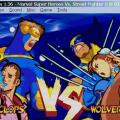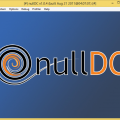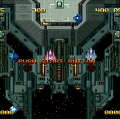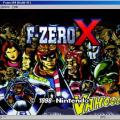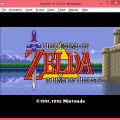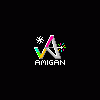- 0 replies
- 2,137 views
- Add Reply
- 0 replies
- 1,850 views
- Add Reply
bsnes v0.042 released

SNES emulator
A new release quite a bit faster than I was expecting, but a lot has changed. Most importantly is a new Windows input driver, "RawInput". The downside is that this makes bsnes require at least Windows XP, as Windows 2000 and earlier lack RawInput support. The upside is that input from multiple keyboards and mice can be distinguished from each other — very useful for dual-Justifier support in Lethal Enforcers. Users of previous versions of bsnes will need to manually select the new driver via Settings->Configuration->Advanced->Input driver, and will need to re-map all assigned input keys, including the default user interface hotkeys. Or alternatively, delete the configuration file under %APPDATA%\.bsnes or ~/.bsnes.
Also new is an XInput driver, which avoids the DirectInput driver limitation of being unable to distinguish the two shoulder trigger buttons. This makes bsnes require DirectX 9.0c or later for the necessary drivers. Note that Windows Vista SP0 does not ship with these, so if you haven't installed it yet, you'll need to do so. This driver is part of the "RawInput" driver mentioned above.
This part is important: if you receive an error regarding xinput1_3.dll, you need to download and install the DirectX 9.0c run-time.
For those on Windows 2000, or without DirectX 9.0c, it is still possible to compile and run bsnes with the older DirectInput driver only; but I won't be providing a binary myself for this — at least not at this time.
More bad news for some: hiro, my Win32 / GTK+ API wrapper, has been discontinued and removed from the source tree for this release. Qt 4.5.0+ is now required for the user interface. Very sorry to the Linux distros that do not have packages for QT 4.5 yet. You'll need to continue with v041 for now.
Changelog:
- Fixed a bug that was preventing BS-X carts from loading and mapping properly
- Fixed a bug with mapping joypads after the first
- Improved window centering code to reduce flickering, still a bit volatile on Linux due to Qt/X11 limitations
- Minor cleanup work on S-PPU BG renderer
- Improved mouse axis / button mapping
- Added proper support for analog joypad inputs: both sticks and triggers are now fully supported
- Windows: added RawInput support, allows up to 16 keyboards + mice to be mapped independently
- Windows: added XInput support, allows Xbox 360 controller triggers to operate independently
- Windows and Linux: Screen saver and monitor power saving disable re-added
>> Get it HERE.
Osmose 0-9-0beta released

SMS/GG emulator
-Osmose is now a GUI based application. A basic OpenGL toolkit was written for Osmose since tested toolkit were unable to get 60Hz refresh guaranted. Maybe will i try QT libraries. GUI was Osmose's most asked feature.-Remove FPS and RDTSC instruction non portable code.
-No more command line options are needed. All is done from GUI now.
-Osmose configuration is now stored into $HOME/.osmose directory under Linux.
Config file is named osmose.conf
-Configuration fileand key mapping has changed too.
-Joystick 1 is actually used with player 1.
>> Get it HERE.

